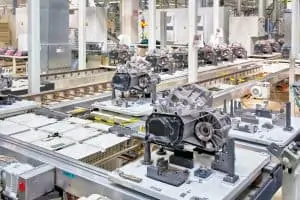
Hyperscale platforms make it easy to access services that would be expensive and complicated to build from scratch. Such access is critical in meeting the demands of today’s fast-paced business world.
Once upon a time, the main rationale for migrating to hyperscale public cloud platforms centered on getting out of the infrastructure maintenance business. IT departments no longer want to have to manage physical servers or face the scalability constraints that come with dependence on on-prem hardware. So, companies moved to the public cloud, where they can rent servers on demand.
It’s still common to think of easy access to infrastructure as the main reason for cloud migration. In reality, though, the value of the hyperscale cloud platforms now extends far beyond Infrastructure-as-a-Service (IaaS). That is why companies interested in maximizing innovation need to think more creatively about why and how to take full advantage of hyperscale solutions.
Allow me to explain by discussing the role that hyperscale platforms play in modern IT, and how businesses can leverage today’s hyperscale solutions to maximum effect.
See also: Building an Agnostic Cloud Platform Infrastructure: Key Features and Implementation Strategies
How cloud platforms have evolved
To understand the role that hyperscale cloud solutions play in modern IT, it helps to think about how hyperscale offerings have changed over time.
When the public cloud emerged in the mid-2000s, it was mostly about IaaS. Its big selling point, as I mentioned, was allowing businesses to rent servers instead of having to manage physical hardware.
But over time, hyperscale clouds began offering additional types of solutions, such as:
- Access to specialized types of hardware, such as GPUs.
- Services for training and deploying AI models.
- Solutions for tracking and securing Internet of Things (IoT) devices.
- Services for building, deploying, and managing robots.
- Access to quantum computers and simulators.
- Data centers powered by alternative or renewable energy sources.
These are all examples of solutions that most businesses would struggle to implement if they had to build them from the ground up – and even if they could build them, managing them would be no mean feat. But because of hyperscale platforms, any organization around the world can easily leverage next-generation hardware and software solutions in a simple, on-demand manner.
See also: AI Workloads Need Purpose-built Infrastructure
Leveraging hyperscale clouds to drive innovation
I’m not taking note of modern hyperscale solutions simply because I think they’re cool. (Nor do I have a stake in the success of hyperscale platforms; I don’t work for one.) Instead, I want to make the point that businesses seeking to innovate – and to keep up in an era when success hinges on the ability to access powerful, sophisticated IT solutions – need to embrace hyperscale solutions.
This isn’t just because hyperscale platforms make it easy to access services that would be expensive and complicated to build from scratch. It’s also because, when used in tandem, modern hyperscale offerings make it possible to do some truly incredible things.
For example, imagine a company that wants to take advantage of robotics. Using a hyperscale platform, it could develop an AI model that guides the robots, then train the model with help from AI-optimized hardware devices (like GPUs). It could also use the platform to communicate with and manage the robots once they are in operation. And it could integrate the robots easily with other, more traditional workloads that it hosts on the same platform.
Viewed from this perspective, hyperscale cloud is the key to unlocking a wide range of innovations across multiple IT disciplines, from robotics and AI to quantum computing, to energy efficiency, and far beyond.
Hyperscale cloud solutions are also great news for companies that feel like they’re falling behind in the ever-accelerating race to modernize IT. By taking strategic advantage of hyperscale, businesses can benefit from the latest, greatest IT innovations, without having to make massive upfront investments or acquire the expertise necessary to build complex solutions in-house.
See also: Neoclouds Surge as Organizations Flee GPU Gridlock
Conclusion: Changing the way we think about hyperscale cloud
All of the above underscores the importance of rethinking the way businesses approach public cloud solutions today. Although IT leaders haven’t always recognized this shift, hyperscale clouds have grown into far more than generic IaaS providers.
They’re portals to a variety of specialized services that, when used in combination, allow businesses to accelerate their pace of innovation, while at the same time keeping IT complexity in check – which is exactly what organizations need to do to remain competitive in an era of increasingly complex technology.































